
















When the Trilon Transportation Platform was formed we knew we had a unique and innovative model to provide each of our clients with transportation services that not only met their needs but went above and beyond. We also set exciting benchmarks that would evaluate our success – such as Engineering News-Record’s Top 500 Design Firms list. I’m excited to announce that many of our platform partner firms ranked on ENR’s Top 500, some of which made significant jumps in their rankings and others landing on the list for the first time. While we know we’re finding success with our clients through our collaborative project wins and our firms’ individual successes – what a thrill it is to see it in black and white.
I hope you see this as encouragement to continue the momentum in collaborations and finding more effective and efficient ways to meet our clients’ needs.
Speaking of collaboration, we are still seeing great opportunities come from our time together at the Trilon Transportation Summit in Denver. I remember the connections that were made, especially among Alternative Delivery leaders. They’ve capitalized on the Summit and recently attended the Design-Build Institute of America’s (DBIA) annual conference for Transportation/Aviation in Cincinnati, OH, where they presented our collective expertise to current and potential clients. In this edition of Braking News, you will read more about our partner firms’ experience at the conference and the expertise they bring to the Alternative Delivery industry.
I’d also like to congratulate Alta on their acquisition of UrbanTrans North America and strengthening its transportation demand management (TDM) services. I’m looking forward to hearing about new ways TDM can be used amongst more of the platform partner firms. Together, we are making significant strides in the industry, and our continued collaboration will only lead to greater successes. Let’s keep up the great work and continue to innovate and excel.
Welcome to TrilonU! A dynamic learning community aimed to support the growth of our Family of Companies. Looking for resources to advance your career or wanting to build connections with Peers and Leadership? TrilonU has programs and resources designed to help.

Mentor Huddles offers an opportunity to Exchange Powerful Ideas to help staff broaden their network through open dialogue where everyone is a mentor and a mentee. Huddles consist of six participants from across the family of companies connecting as a Team, Self, and Leader.
Participation:
All staff are eligible to participate.
Welcome to TrilonU! A dynamic learning community aimed to support the growth of our Family of Companies. Looking for resources to advance your career or wanting to build connections with Peers and Leadership? TrilonU has programs and resources designed to help.
Time Commitment:


Participants are required to make a 12-month commitment to meet monthly and charge one hour per month on timesheet to your company training code.
Mentor Huddles offers an opportunity to Exchange Powerful Ideas to help staff broaden their network through open dialogue where everyone is a mentor and a mentee. Huddles consist of six participants from across the family of companies connecting as a Team, Self, and Leader.
Participation:
All staff are eligible to participate.
Jam Sessions brings together 10-12 staff to meet with a Leader from the Family of Companies to Gain Expert Insight through a small group setting. The Session Leader shares insights on business, professional, and personal development.
Time Commitment:
Participants are required to make a 12-month commitment to meet monthly and charge one hour per month on timesheet to your company training code.
Participation:


All staff are eligible to participate.
Time Commitment:
Jam Sessions brings together 10-12 staff to meet with a Leader from the Family of Companies to Gain Expert Insight through a small group setting. The Session Leader shares insights on business, professional, and personal development.
Participants can attend two sessions per year and charge 1.5 hours per session on timesheet to your company training code.

Participation: All staff are eligible to participate.
Time Commitment:
Participants can attend two sessions per year and charge 1.5 hours per session on timesheet to your company training code.
The Development Hub is an information portal to Discover New Heights with resources designed to elevate your success. Curated content like presentations and guidance documents are downloadable and accessible to staff 24/7.
The Development Hub is an information portal to Discover New Heights with resources designed to elevate your success. Curated content like presentations and guidance documents are downloadable and accessible to staff 24/7.
Participation: All staff can access resources.
Participation: All staff can access resources.



The 2024 Design-Build for Transportation/Aviation Conference, held in Cincinnati, OH, in April, offered a platform for our Trilon Transportation partner Design-Build experts to showcase their extensive nationwide capabilities to our clients, contractors and the broader alternative delivery community.
By attending the conference as a collective Trilon family, we introduced our clients to other Trilon family firms. This was especallly opportunistic for HMB, which is located in Kentucky right across the river from Cincinnati.
“It was fantastic to introduce our sister firms at Trilon to our partners at Kentucky Transportation Cabinet (KYTC),” said Joey Mosley, PE, Principal-In-Charge at HMB. “It
was beneficial for this client to witness our nationwide bench strength and to familiarize KYTC to new team members with extensive Alternative Delivery experience from across the country.”
In addition to showcasing our DesignBuild expertise, the conference provided an opportunity for our partners to have face-toface conversations and connect on a more personal level so we can build trust with one

another and pursue collaborative Alternative Delivery (AD) projects.
“At the platform level, the ability to put faces to names and see how similar we are in many respects provides confirmation that the partnerships have tremendous value,” said Darrell Fischer, PE, DBIA Chief Business Officer at Rinker Design Associates (RDA). “The conference reinforced the desire, the need, and the opportunities that we, collectively, have in front of us.”
DRMP Alternative Delivery Director and Vice President TJ Lallathin Jr., PE, DBIA, said he was excited to bring several of his team members for the first time to attend the conference.
“This conference is always a great opportunity to hear about designbuild current trends, challenges, and lessons learned,” Lallathin said. “DRMP is always looking for new opportunities to expand our design-build portfolio and having our staff be present to network and attend sessions is very valuable.”
The conference offered valuable insights into the industry’s and owners’ alternative delivery efforts, highlighting future directions and trends, said
Horrocks Executive Vice President Matt Horrocks, PE.
“Similar to previous years, the conference was well attended with representatives from most state DOTs and many industry partners, which provided a great opportunity to represent what the Trilon family is about,” Horrocks said. “In addition to the many opportunities to visit with our industry partners and clients, our Trilon Family open house was well attended, offering an excellent venue to discuss these trends. The Trilon model was well received, and they look forward to leveraging our combined skill sets and experience to enhance the delivery of their projects.”
Fischer said on a department level, he and his team established strong connections with our partner firms and explored how we could leverage the strengths of other platform firms to enhance resources and improve our proposals to boost our success rates.
“I think a key strategy to a successful design-build team is synergy,” he said. “You obviously have to have the capability and expertise to perform the work. However, getting along with each other and working well in a collaborative manner is critical. You have to be able to give constructive feedback but also
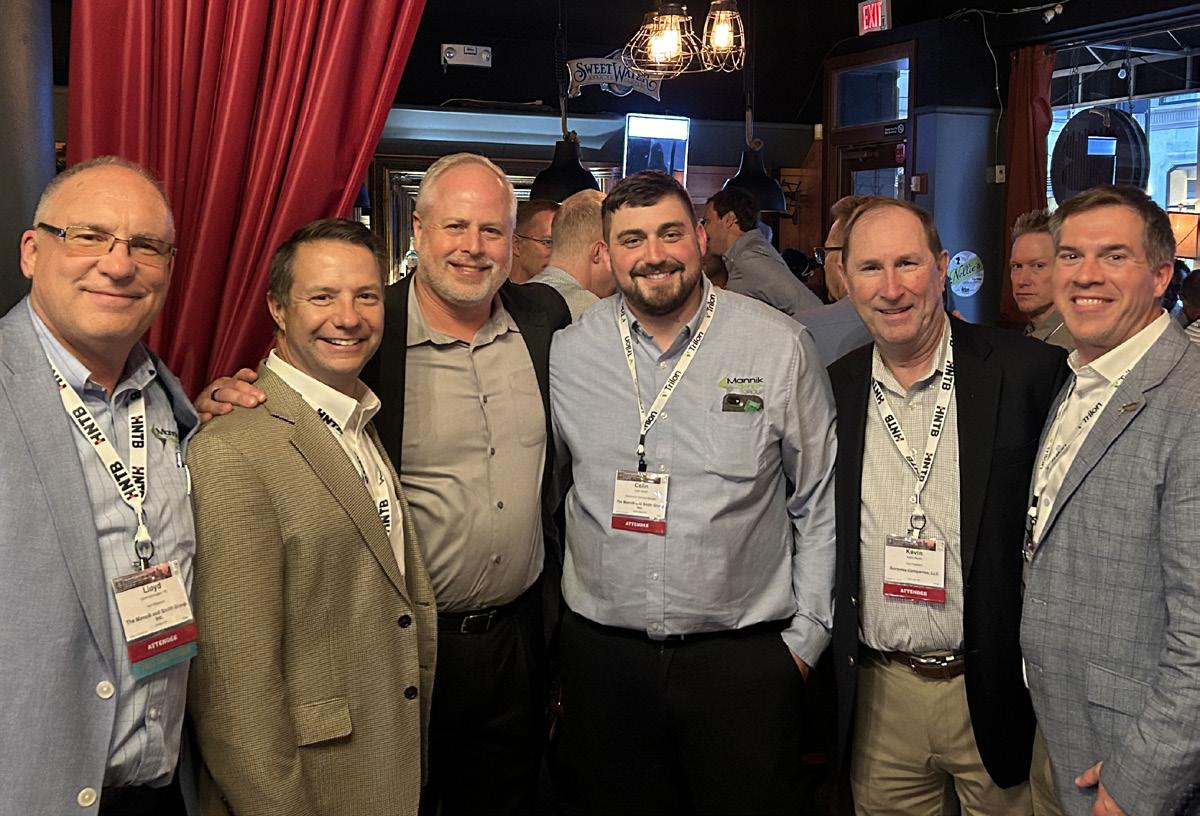
be able to take criticism without it being personal. We all have a common goal and that is to win and execute the project successfully.”
Attendees highlighted several key takeaways from the conference. Foremost, was the opportunity to witness firsthand how the region is embracing new methods of AD, notably through a nationwide shift toward Progressive Design-Build (PDB) projects. Additionally, the emphasis on promoting transparency among stakeholders through collaboration to foster trust and ensure project success was a significant point of discussion.
“Success on alternative delivery projects hinge on collaboration, clear communication, risk allocation, and adaptability,” said Wes Mattingly, PE, CPESC, Vice President of Regional Operations at HMB. “Collaboration from all stakeholders furthers shared risk, commitment and enables holistic problem-solving.”
PDB combines early contractor involvement from construction manager/general contractor (CM/GC) with the comprehensive responsibilities of designbuild. This single-contract method enables significant owner influence on design, with continuous feedback on constructability and costs, promoting
collaboration and transparency to refine the project’s scope, schedule, and budget.
“Florida is one of the newer states to introduce Progressive DesignBuild to complete their large and complex projects,” Lallathin said. “My focus during this conference was learning more ways to collaborate on this delivery method, provide the best solutions for our clients, and listen to any best practices when it comes to the schedule and budget.”
Horrocks said PDB is gaining in popularity and agencies that have not yet considered this delivery method are now looking into it.
“Much of the industry is behind the curve on engaging in progressive design-build, and there is significant interest on being part of Progressive DesignBuild delivery,” he said.
A notable point during the PDB discussion was the clients’ curiosity about how this process could address their concerns and improve project outcomes, said Horrocks Marketing Director Sandi Lampshire.
“I went to a client panel and the topics that were brought up were the need for more teams competing and the fear about a loss in competitive pricing and
aggressive schedules, more innovative ideas brought to the table, don’t switch team members but be committed to who you propose, and the desire to trust estimators.
“Clients were very interested in what Progressive Design-Build could look like for them, and they had lots of questions about how PDB could improve upon the above-mentioned fears,” Lampshire continued.
In discussing the implementation of PDBs in construction projects, Fischer noted it is essential to recognize both its advantages and the need for judicious application.
“As a tool in our toolbox, I find PDBs to be very useful and beneficial,” Fischer said. “They allow the contractor, designer, and owner to shed risk through a collaborative development process. However, I caution our industry to use the PDB tool wisely. I believe that PDB should be used where risk makes traditional Design-Build more costly or unfair to the Design-Build team.”
As we continue working toward our combined strategy, Lampshire offered some great insights.
“Design-builds are expensive to pursue, and if you don’t have a savvy marketing team leading the way with your technical team, the cost can be high,” she said. “We have great sister companies with really great connections and relationships with DOT leadership. Coming together to develop a strategy for pursuits across Trilon and the ability to staff will be key.”
Attending the DBIA conference as a collective group of firms was a success and a great first step at showcasing our combined Alternative Delivery strength. Next steps will focus on building momentum and accelerating our collaboration in Alternative Delivery to win one to two projects by next year’s conference.
Collectively we have worked on more than $37 billion in construction value on alternative delivery jobs




Lead design firm for 20 DB projects in Florida valued at $1.5 billion in construction value
Lead design firm for alternative delivery on more than $15 billion total alternative delivery in construction value
$6.5 billion as Program Manager/GEC/Owner’s Representative for alternative delivery projects
Major role on more than $3 billion in construction value on alternative delivery jobs and as Key Design Team Member on another $12.5 billion in construction value
Since 2014, HMB has been at the forefront of reshaping the landscape of Eastern Kentucky’s transportation infrastructure through our involvement in the major upgrades to the Mountain Parkway, Kentucky’s gateway to Appalachia. As the General Engineering Consultant (GEC) along with partners Qk4 and Stantec, we’ve played a pivotal role in orchestrating the design, purchasing the rightof-way, utility relocation, and construction letting across various sections of this historic 50-plus mile roadway.
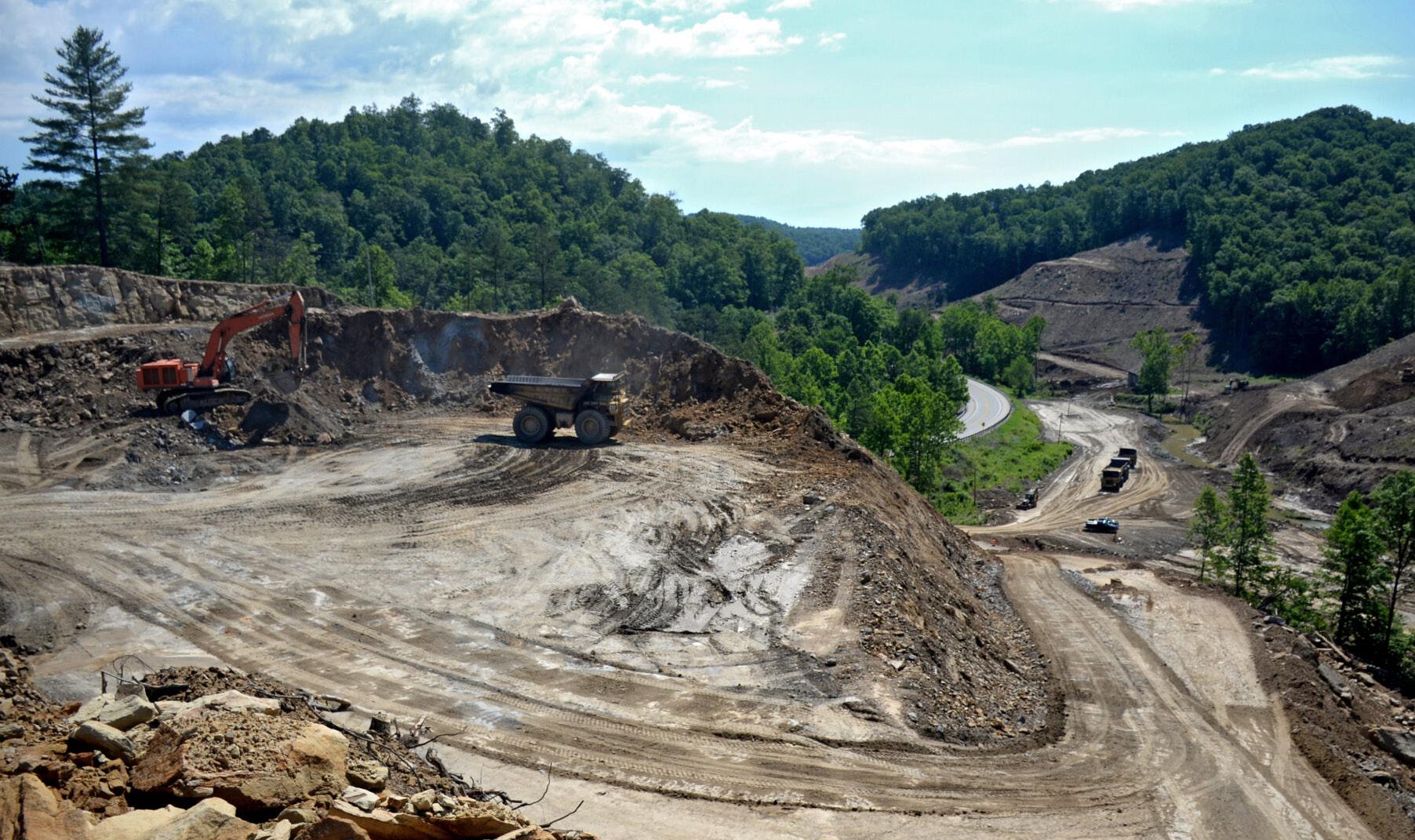
Our journey began with a commitment to excellence, driving us to lead transformative initiatives aimed at enhancing safety and connectivity along the Mountain Parkway. One notable milestone was the meticulous redesign of the “Restaurant Row” section in Salyersville. By leveraging innovative access management strategies, we successfully helped transform a convoluted network of 90 intersections into an access-controlled corridor with just five intersections, significantly improving safety and traffic flow.

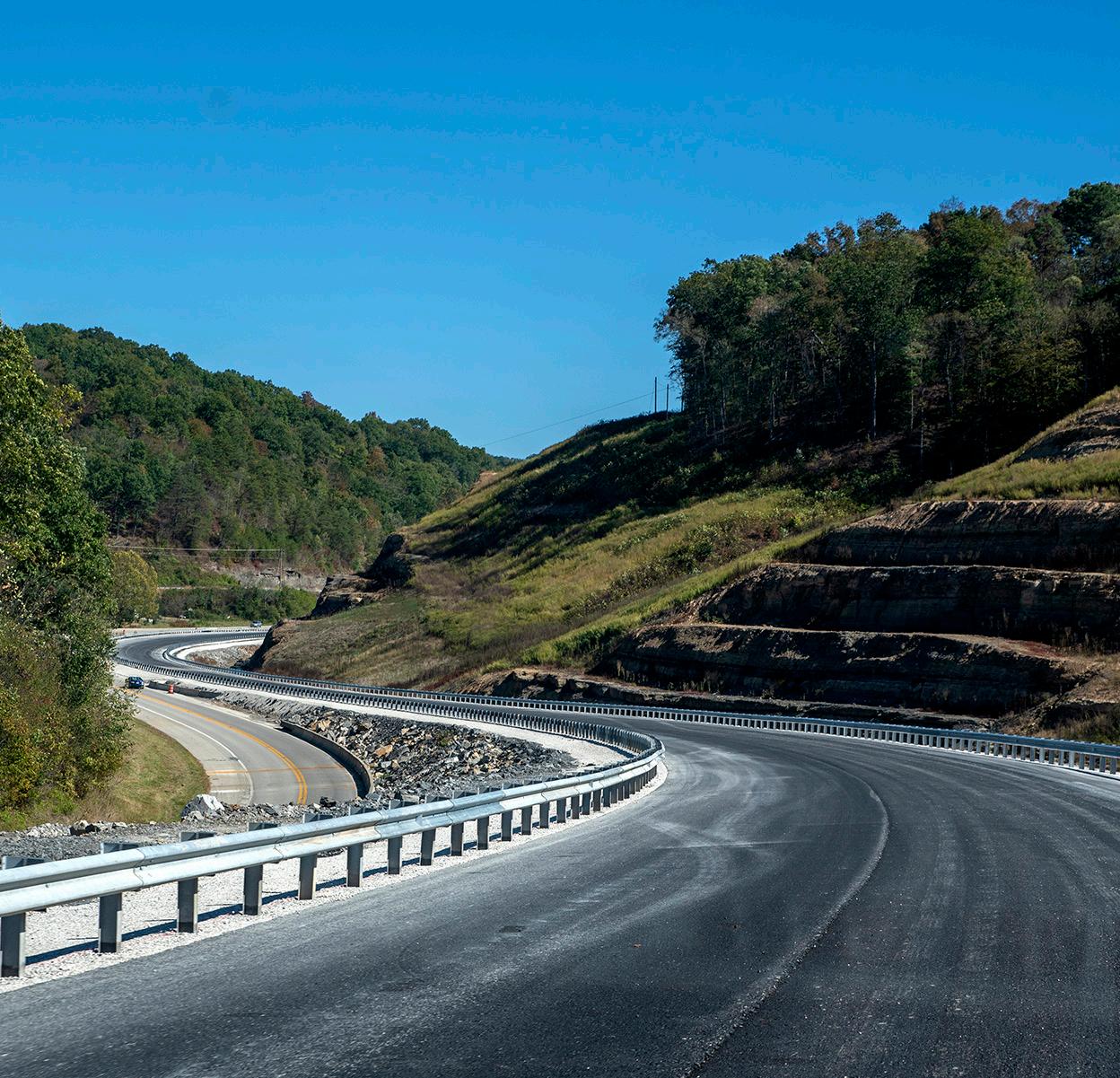
Venturing west of Salyersville, our focus shifted toward widening the existing two-lane parkway into a four-lane fully controlled thoroughfare. These enhancements not only cater to the growing demands of commuters and travelers but also serve as a catalyst for economic development and regional connectivity, fostering prosperity across the “Hills and Hollers” of Kentucky’s mountain region.


At the heart of our endeavors lies a visionary Progressive Design-Build (PDB) project, poised to modernize and simplify transit from Salyersville to Prestonsburg. Stretching over 34 miles, this ambitious undertaking represents a monumental leap toward fulfilling the long-standing promise of a highspeed corridor connecting Eastern Kentucky with the broader state at large. As leaders in this effort, HMB has spearheaded preliminary engineering efforts and assumed the critical role of GEC in managing the PDB contract, underscoring our unwavering commitment to driving progress and innovation.


The Mountain Parkway stands as a testament to Kentucky’s rich heritage and enduring spirit of progress. Conceived as a visionary endeavor by Gov. Bert Combs, this lifeline has served as a vital artery connecting rural communities with bustling economic centers since its inception in 1963. In 2014, Gov. Steve Beshear’s bold vision for its expansion heralded a new era of opportunity and prosperity for the region, reaffirming the collective commitment to shaping a brighter future for all Kentuckians.


As stewards of progress, we remain steadfast in our dedication to excellence and innovation, guided by a shared vision of creating sustainable, resilient infrastructure for generations to come. With each milestone achieved, we inch closer toward realizing the full potential of the Mountain Parkway as a beacon of connectivity and opportunity, uniting communities and fostering prosperity across the Bluegrass State and beyond.
The journey of the Mountain Parkway is a testament to the power of collaboration, innovation, and perseverance. As we continue to navigate the complexities of modern infrastructure development, HMB stands poised to lead the charge toward a brighter, more connected future for Kentucky.

In the heart of the Midwest, where the states of Ohio and Kentucky converge, lies a crucial artery of the American interstate system: the Brent Spence Bridge. This vital link between the two states along Interstate 71/75 has served millions of travelers for decades. Now, a monumental project is underway to revitalize and enhance this lifeline of transportation infrastructure.
HMB’s journey with the Brent Spence Bridge Project began with a call to action from the Kentucky Transportation Cabinet (KYTC). Tasked with providing Rightof-Way (R/W) plans for the Kentucky section of the project, HMB swiftly stepped into action through its statewide design contract. Since then, our involvement has deepened, as we join the oversight GEC team under HNTB, propelling forward with a Progressive Design-Build delivery approach.
The scope of the Brent Spence Bridge Corridor Project is nothing short of ambitious. Spanning an 8-mile stretch of the I-71/75 corridor, the endeavor aims to usher in a new era of connectivity and efficiency. This transformation promises to elevate the quality of life for commuters and businesses alike, not only within the region but also for the broader network of travelers relying on this critical segment of the federal highway system.

At the heart of the project lies a strategic vision to modernize transportation infrastructure while fostering economic growth. With an estimated cost of $3.6 billion, jointly funded by Ohio and Kentucky, this initiative represents a significant investment in the future. Central to the plan is the construction of a companion bridge adjacent to the existing structure, ensuring uninterrupted service while accommodating evolving traffic demands.
Additionally, HMB has proposed transparent noise walls to reduce sound pollution along the corridor, an option that was presented to and accepted by KYTC and the public at large through an aggressive public engagement plan. These transparent noise walls will be the first of their kind in the Commonwealth.
Recent milestones have propelled the project forward. In December 2022, Ohio and Kentucky secured federal funding grants totaling $1.6 billion from the Bipartisan Infrastructure & Jobs Investment Act. This crucial financial support underscores a commitment from both state governments to pursue federal resources diligently, steering clear of tolls as a funding mechanism.
The scope of improvements is comprehensive and wide-ranging, addressing key aspects of safety, efficiency, and community enhancement:
The existing Brent Spence Bridge will undergo reconfiguration, reducing from four lanes to three, with dedicated lanes for interstate and local traffic.
Interstate and local traffic will be separated, easing congestion and improving access to neighboring business districts.
Investments in bike and pedestrian infrastructure will foster better connectivity between Cincinnati and western neighborhoods, enhancing mobility and quality of life.
Measures to mitigate stormwater runoff and reduce noise pollution demonstrate a commitment to sustainable development and community well-being.
As the Brent Spence Bridge project accelerates toward realization, its impact will extend far beyond the realm of transportation. It symbolizes a
collaborative effort to modernize infrastructure, stimulate economic growth, and enhance the fabric of communities on both sides of the Ohio River. With each milestone achieved, we draw closer to a future defined by progress, connectivity, and opportunity.

As Lead Designer, Horrocks is part of the winning team recently selected for a major commuter rail expansion in central and northern Utah. FrontRunner Forward Partners or FFP (a joint venture of Stacy Witbeck and Ralph L. Wadsworth Construction) was awarded the $1B “FrontRunner 2X” project. This Progressive Design-Build (PDB) project will involve strategic double tracking of the FrontRunner commuter rail system at nine segments along the 82-mile corridor serving Utah’s urban Wasatch Front. FrontRunner 2X is the largest transit project led by the Utah Department of Transportation (UDOT) to date.
The additional double tracking will increase train frequency for travelers. Currently, the trains run every 30 minutes during peak hours and 60 minutes during off-peak. With the added improvements, train waiting times will be reduced by half, changing to every 15 minutes during peak hours and every 30 minutes during off-peak. When the project is completed, Wasatch Front communities will have access to a more reliable and convenient transit system as demand for and dependence on public transportation continues to rise in Utah.
Horrocks is well-known in the Utah transportation market for heavy highways and transportation structures, but we are working to establish our reputation for transit planning and design. During proposal development, the Horrocks team advised the joint venture (JV), adding invaluable previous understanding of the FrontRunner corridor and UDOT PDB delivery processes. The resulting win is not only the largest transit project Horrocks has participated in, but also one of our first sizeable commuter rail projects. We are looking forward to the project experience and the doors it may open for our transit team.
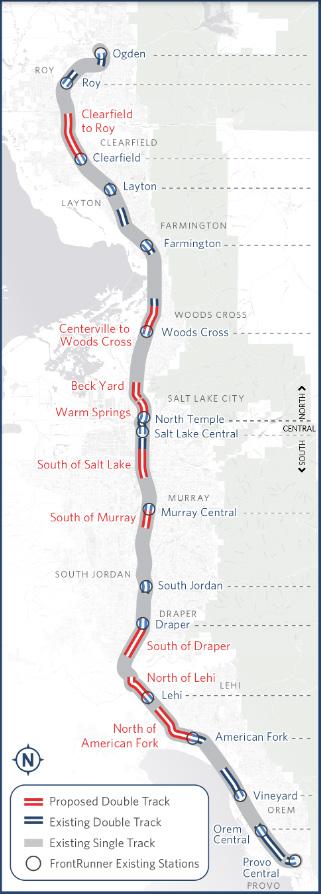
To learn more about the FrontRunner 2X PDB project, visit the Utah Transit Authority’s website: https://frontrunner2x.utah.gov/


Transportation Business Line Leader
dgraham@horrocks.com
Doug recently stepped into the role of Transportation Business Line Leader with more than 28 years at Horrocks. Having recently served alongside Brian Atkinson as the Deputy Transportation Director, Doug brings a wealth of experience from a career in the transportation sector with an emphasis on Design-Build program management for large projects.
“As I take on the role of Business Line Leader, I look forward to winning new and exciting projects that continue to challenge and grow our staff. As a leading transportation design firm in the western United States, I hope to see Horrocks continue to provide rewarding career opportunities.” - Doug Graham
Employee Spotlight:

Idaho Transportation Director of Operations
kellyh@horrocks.com
Kelly Hoopes has been newly appointed as Horrocks’ Transportation Director of Operations in Idaho. With 26 years of experience as a Project Manager, Kelly has provided design for a variety of projects including roadway, drainage, and traffic. His in-depth knowledge of design processes and experience in stakeholder communication will be a great asset in this new state leadership role.
“[I am] very excited to work with project managers, design leads, and staff on the projects across their state. We have been included in some of the best projects in Idaho. I am excited to be a part of them as much as possible.” - Kelly Hoopes


Horrocks was honored to receive a National Recognition Award from the American Council of Engineering Companies (ACEC) at their annual Engineering Excellence Awards Gala in Washington, D.C., on Wednesday, May 15.
This award honors the Horrocks team’s work on the US-89; Farmington to I-84 Progressive Design-Build (PDB) project to improve safety and mobility in a major commuter corridor in Davis County, Utah.
Those in attendance to accept the award included Richard Hansen, Ryan Wride, Spencer Stephenson, and Brian Atkinson.
The US-89 project was completed by the Utah Department of Transportation, WSP, Granite Construction, Ralph L. Wadsworth Construction, Michael Baker International, and additional subcontractors who contributed to the solutions of this complex, alternative delivery endeavor.

Prince William County, VA | $47M DB
General Contractor: Wagman Heavy Civil, Inc.
RDA served as the Lead Designer for this $47M locally administered DB project to alleviate congestion along the county’s parkway between Interstates 95 and 66. The existing condition included two signalized intersections closely spaced together that caused significant backups along the parkway.
Two bridges, free-flow ramp movements, and two continuous Green-T intersections replaced the existing signalized intersections. Roadway, drainage/SWM, structures, traffic/ITS, ROW, utility coordination, environmental studies and permitting, and survey services were all performed in house.
During the Public Hearing, locals supported the addition of a pedestrian bridge not originally included in the scope which resulted in our team working with Prince William County and VDOT to define appropriate design criteria for a pedestrian bridge post award. We also collaborated to remove two traditional signals anticipated at the ramp/intersection junction and replace them with Green-T intersections.
The project’s success began with RDA’s innovation of the client’s alternative by realigning the crossing roadways to construct the pair of bridges supported by a single retaining wall. This reduced
costs and allowed more of the project to be constructed outside of the existing roadways/intersections, speeding up the scheduled construction.
Other key project features include an Interchange Justification Report, Limited Access line changes, and construction of a parking lot and an off-alignment SUP.
This project is the second successful locally administered DB project within five miles of RDA’s Headquarters in Manassas, VA. The scheduled construction completion date is this summer.



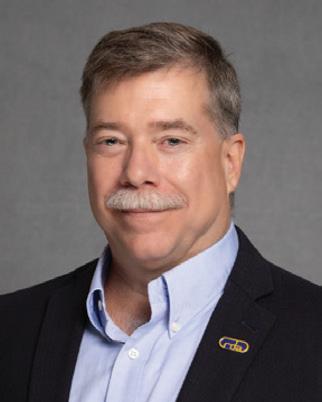
John Giometti, PE, has 35 years of experience in the design and management of transportation projects. He has led multidisciplinary projects for all types of delivery methods. Types of projects include secondary, primary, urban, and interstate in rural and urban areas, including corridor studies, new route locations, highway widenings, structure replacements, interchange justification reports, new and retrofit interchanges, intersection improvements, safety improvements, and P3/DB projects.
As the Vice President of Transportation, he is responsible for allocating, overseeing, and managing resources for transportation design services within RDA. Design and field elements managed include roadway design, hydrology/ hydraulic analysis, traffic analysis and design, construction plan preparation, ROW acquisition, utility coordination/ design, environmental permitting/environmental compliance, construction inspection, and structural design. His duties include the development and implementation of the design QA/QC programs for transportation design, environmental services, and construction inspection DB projects. Additionally, John coordinates with clients to ensure goals are met and quality is achieved. John is responsible for staffing projects; hiring subconsultants; negotiating contracts with clients, contractors, and subconsultants; and project scheduling to ensure on-time/on-budget performance.
Examples of his substantial project management experience include:

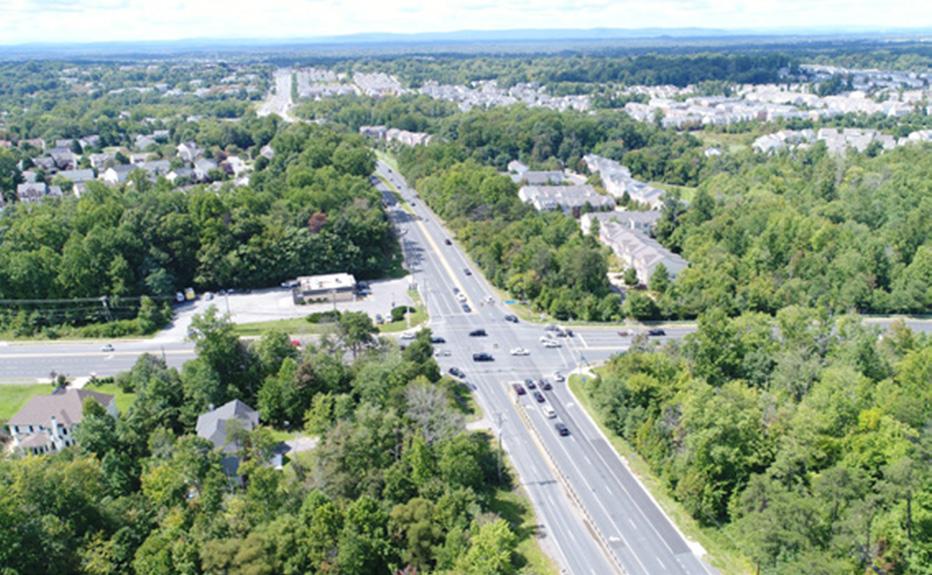

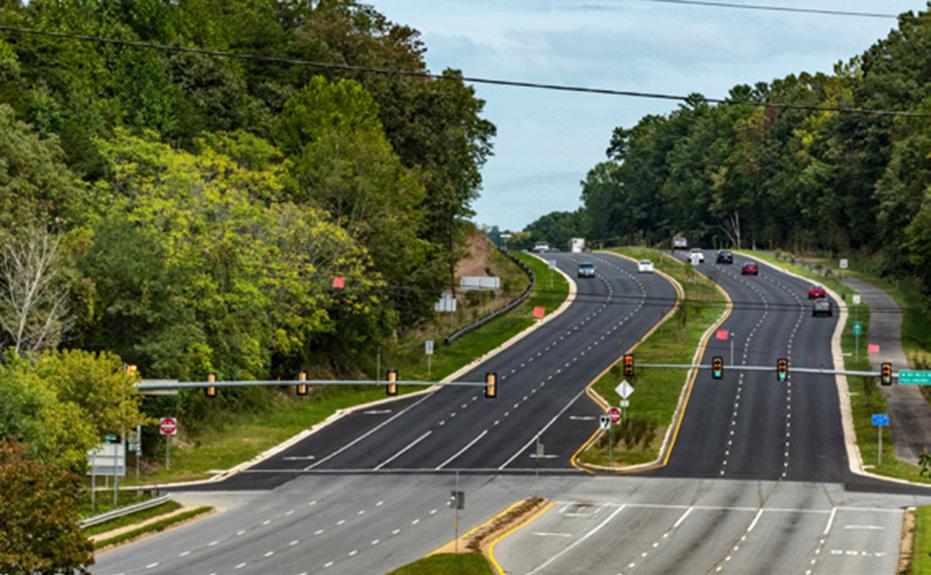
Fairfax County, Va. | $441M P3/DB
Deputy Design Manager and MOT Design Lead
RDA is the Lead Designer for extending the 495 Express Lanes north by 2.5 miles from the Dulles Toll Road to the George Washington Memorial Parkway (GWMP) interchange.
Fairfax County, Va. | $86M
Project Manager
RDA provided professional engineering services to widen 1.5 miles of Route 29 from four to six lanes for this urban project with multiple ROW constraints to include intersection improvements, pedestrian and bicycle facilities, access management, SWM, and complex MOT.
Widening Inside the Beltway
Arlington and Fairfax Counties, Va. | $87.5M DB
Assistant Design Manager
As the Lead Designer, RDA’s design improved functionality to a gridlocked corridor by adding a new lane along I-66 EB, a dedicated WMATA station connection, and a signature W&OD bridge over Route 29, eliminating an at-grade crossing.
Albemarle County, Va. | $42M DB
Segment Design Manager (Widening Element)
RDA provided contract-wide professional engineering services (survey,utility coordination, ROW acquisition, and public involvement) for all three segments of the Route 29 Solutions project (Route 29 Widening, Rio Road Grade Separated Interchange, and Berkmar Road).


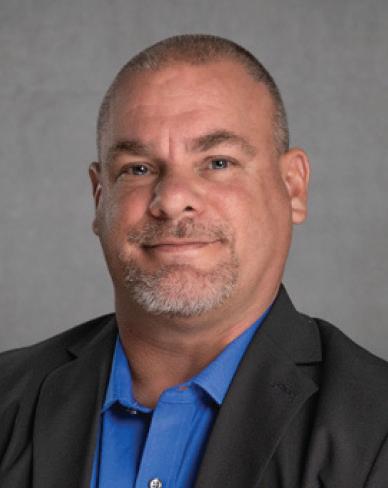
Rick DeLong, PE, has 31 years of experience serving as Design and Project Manager for major DB and design-bidbuild projects throughout Virginia, as well as managing multidisciplinary design teams and subconsultants for the delivery of transportation and infrastructure-related projects for various clients.
In his role at RDA, he manages and oversees the transportation engineering staff and projects, including roadway, traffic, and hydraulics disciplines. Additionally, he routinely manages the coordination with other RDA disciplines, including structures, utilities, survey, and ROW departments and allocates company resources to ensure efficient and effective delivery of RDA’s services to meet project schedule and budget. Rick is responsible for monitoring project performance for schedule, budget, and contract requirement compliance, and ensuring the implementation of RDA’s corporate Design Quality Management Plan. He has a thorough understanding of various project delivery methods as well as all applicable VDOT and AASHTO design principles and standards.
Examples of his substantial project design and management experience include:


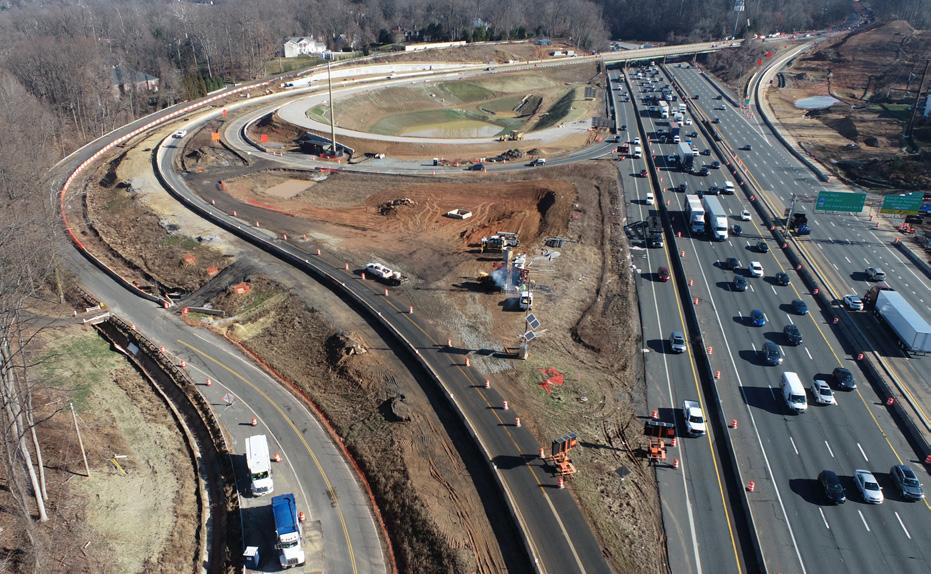

Road Interchange
Prince William County, Va. | $47M DB
Deputy Design Manager
RDA, as the Lead Designer, aims to reduce congestion and increase capacity along the Route 234 corridor, which currently is restricted by two existing signalized intersections.
MM 221 to MM 225 Augusta County, Va. | $101M DB
Deputy Design Manager
This $101M DB project is part of the I-81 Corridor Improvement Program. Improvements include operational safety and travel reliability, new guardrail to meet current standards, box culvert extensions, and widening/rehabilitating five bridges.
Fairfax County, Va. | $441M P3/DB
Deputy Design Manager
RDA is the Lead Designer for extending the 495 Express Lanes north by 2.5 miles from the Dulles Toll Road to the George Washington Memorial Parkway (GWMP) interchange.
OTB Segment IC
Fairfax County, Va. | $39M Project Manager
As part of the I-66 Transform Project, RDA was contracted by FAM to lead Segment IC East. This segment is approximately 4,300 LF of interstate widening over US Route 29 and includes improvements to the interchange.


• 2024 Heavy Construction Contractors Association –Excellence in Infrastructure Award
• 2024 DBIA MAR – Award of Merit - Infrastructure
Prince William Parkway (Route 234) / Balls Ford Road Interchange and Widening Project
Prince William County, VA.

This $84M DB project realigned existing Balls Ford Road by creating/ implementing a diverging diamond interchange over Prince William Parkway, including extensive ramp improvements to and from I-66.
Realigned Balls Ford Road provides a four-lane divided roadway with turn lanes at multiple intersections, raised medians, curb and gutter, sidewalk, a shared-use path, and a single-span bridge over the Norfolk Southern Railroad. Design requirements
included: permits, survey; roadway, bridge, and drainage design (SWM/ BMP analysis); erosion control plans; local drainage and culvert design; outfall analysis; a TMP; signage and pavement marking plans; signal design; QA/QC; public involvement/ stakeholder coordination; utility design, coordination, and relocation; ROW acquisition services; subconsultant oversight/management; and railroad coordination and comment incorporation/resolution.

I am excited to spotlight Alta’s bigger and better Transportation Demand Management (TDM) practice in this issue. We know the Transportation Platform excels at delivering infrastructure. TDM complements infrastructure with strategies to maximize the efficiency of our transportation systems: educating people on travel options, encouraging them to make sustainable choices like bike, transit, or rideshare, and helping reduce congestion and achieve climate goals. Read on to learn more, including a staff profile and project highlight.
First, we are celebrating a couple of collaborative wins: The Lake County, FL, Safety Action Plan, partnering with DRMP and CPH, will continue our focus on roadway safety and reducing fatalities of pedestrians and other vulnerable users. The Alamo Wash Greenway Design in Tucson, AZ., partnering with Horrocks, is a 9-mile urban greenway through midtown consisting of design, engineering, and public engagement services. We’re also excited to have started some great conversations with Fuss & O’Neill centered around partnering on climate resilience. We see increasing funding opportunities for projects that link climate resilience with sustainable and equitable transportation. As just one example, Alta recently helped West Memphis, AR, win a $16 million USDOT PROTECT grant aimed at restoring floodplains along the Mississippi River to prevent repeated flooding of transportation routes and a major bridge between Arkansas and Tennessee.
Our work matters – whether building safe roads that meet the needs of all users, making sure those roads can withstand extreme weather events and the impacts of climate change, or helping to influence travel behaviors to optimize the efficiency of those roads. We’re always happy to talk with our Transportation Platform colleagues to strategize and collaborate.

With the acquisition of UrbanTrans North America, a transportation planning and behavior change firm, we have expanded Alta’s existing services in transportation demand management (TDM) with 30 talented teammates on board.
As we all know, communities today face complex transportation challenges and competing transportation priorities, from increasing congestion to environmental concerns and limited resources. TDM strategies offer an innovative solution by optimizing transportation resources and encouraging sustainable travel behaviors. Alta’s TDM practice helps
our clients achieve complex transportation goals by creating sustainable transportation behaviors through a people-first approach.
Alta’s full-service TDM practice offers TDM planning and design, program implementation and strategic marketing, and a results-oriented evaluation approach to behavior change strategies. By partnering with the industry’s largest team of TDM subject matter experts, clients receive measurable impacts for improved air quality, public health, safety, economic vitality, and the efficiency of transportation infrastructure.
For more information, please reach out to Joddie Gray (joddiegray@AltaGo.com), Alta’s recently appointed TDM Practice Area Lead.
Project Leaders: Emily Haar and Matthew Kaufman
Alta helped Denver International Airport (DEN) develop a transportation demand management (TDM) plan to improve access for passengers and employees and decrease drive alone travel as much as 10 percentage points.
Alta (formally UrbanTrans) was part of a team that conducted a comprehensive mobility study for DEN. Alta led the TDM portion of the study.
Passenger and employment growth is increasing rapidly at the airport, as is the

growth of nearby neighborhood developments. DEN is looking for a solution to reduce congestion on the main road to the airport while also improving job access and making it easier for passengers to get to the airport.
Alta collected and analyzed an extensive amount of information to understand what transportation challenges exist and what options may be best to address those challenges and reduce vehicle trips. We analyzed multiple origin-destination datasets, parking demand, curb utilization, and employment data. To ensure a thorough understanding
of travel needs, we led and supported direct outreach efforts that targeted airport tenants, employees, and passengers. This involved conducting interviews and surveys.
Collaborating closely with DEN staff and other stakeholders, Alta helped develop mobility program goals that guided the selection of appropriate TDM strategies. These strategies were then carefully scored to identify those most likely to achieve the airport’s objectives.
The result was a narrowed list of 19 priority TDM strategies to be implemented over the next decade.
The TDM Plan includes organizational options for delivering a TDM program. It also identifies necessary partnerships, implementation steps, and estimated budgets to implement the recommended TDM strategies. The plan was approved by the City Council in March 2024, and $1.2 million has been identified to implement the plan’s recommendations. Once all the strategies in the plan are implemented, employee drive alone trips will drop 10 percent, and passenger use of transit will increase 10 percentage points.
Click here to download the plan!

TDM Programs Associate, Los Angeles jossimarfuentes@AltaGo.com
How did our TDM professionals discover this lesser-known field? For Jossimar Fuentes, his career followed a circuitous path from working in data for a defense contractor, to working for the non-profit workforce development arm of a union. After completing his master’s degree in urban planning and seeking an atypical experience for his next career move, he stumbled upon an opportunity to work for UrbanTrans in 2018.
Jossimar had always wanted to center his work on people who need the most help navigating their transportation options.


Growing up in a low-income area of L.A. without a vehicle, he understands the importance of efficient and reliable transit systems. Jossimar creates programs that consider overlooked or marginalized communities, for people who are already using and rely on transit. He asks how we can provide the freedom of movement through transit that often seems only attainable by those who drive. Jossimar’s work managing the Iride Inglewood program in LA County is a good example.
In 2019 the City of Inglewood created a shuttle system to shorten the travel time for workers traveling from home in Inglewood to work at the airport, a trip of only 5 miles that took over an hour due to congestion and the winding route around the airport. UrbanTrans was hired to launch the system, but pandemic shutdowns halted the schedule, which surreptitiously enabled Jossimar and the team to dedicate time to truly understand the needs of the end users. They discovered that many of these essential workers needed training on how to use a new smartphone app, a pinch point for accessing the service. Also, they determined that outreach to promote the shuttle service would be best working with trusted stakeholders like the unions. These small but important discoveries enabled the project team to fine-tune the program’s implementation to suit the workers’ needs.
Iride is now in operation and the end users report an average commute time of just 22 minutes and is the only low-cost or free service that drops off and picks up directly in front of the LAX terminal doors. Jossimar feels privileged to do this work and proud to be able to advocate for people who don’t think they are typically being listened to.
For drivers traveling through Florida’s busy transportation network, frequent congestion and insufficient interstate capacity has been an issue for years. Coupled with Florida’s rapid population growth, the current transportation system is not meeting the demands for residents and annual visitors. With over 1,000 people moving to Florida every day, and 135 million visitors annually, the state is constantly implementing new funding programs to address these key transportation system issues.
Under Gov. Ron DeSantis’ leadership, the Florida Legislature passed the Moving Florida Forward Infrastructure Initiative, a $4 billion program that identified critical roadway projects and previously approved projects that lacked construction funding but had immense community support. Advancing construction on these projects will improve congestion, safety, and the resiliency of Florida’s transportation network, while enhancing the state’s supply chain and economic growth.
A key delivery method to fast track the completion of these projects is Alternative Delivery. Traditionally, the Florida Department of Transportation (FDOT) has used Low-Bid Design-Build (DB) and Adjusted Score DB procurement methods but has recently introduced the Phased DB method. Like Progressive DB, Phased DB allows the Department to choose a team based on qualifications and experience, instead of price, and reduces the overall procurement schedule.
One area of Florida that is in vital need of congestion relief and improved regional
connectivity is Central Florida. Home to theme parks and tourist attractions, the City of Orlando experiences 74 million visitors each year. Interstate 4 (I-4) is a major corridor and vital route to connect these users to the Orlando International Airport, Universal Orlando Resort, Walt Disney World, and Downtown Orlando. Following the success of the I-4 Ultimate P3 project, FDOT is now focused on “Beyond the Ultimate (BTU),” which is comprised of several projects in Orange, Osceola, and Polk counties that will continue to improve the corridor for all modes of transportation.
With the new Moving Florida Forward Initiative, FDOT will deliver the I-4 BTU corridor improvements as a series of projects over the next few years. These improvements include roadway widening, adding express lanes, interchange modifications/improvements, new bridges, and bridge replacements and widenings.
DRMP’s success on DB projects is due in part to the innovative designs we bring

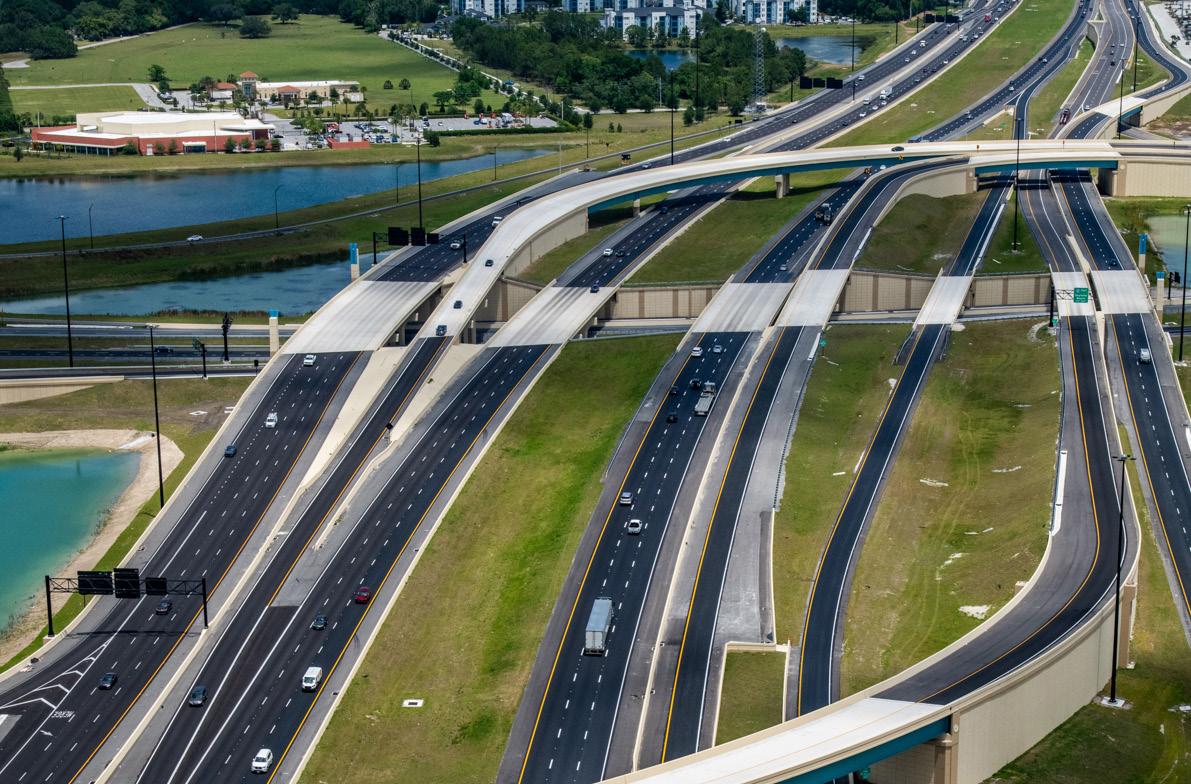
As a leader in DB projects in Florida, DRMP has served as a partner to FDOT and other transportation agencies to complete many large and complex DB projects. This includes the Wekiva Parkway Section 8 Interchange, the SR 538 (Poinciana Parkway) Widening, the A. Max Brewer Bridge Replacement, and the US 17/92 at SR 436 Interchange.
to each project. Our dedicated team of experts focus solely on enhancing the design and work closely with the contractor to improve the construction of the project. In total, our innovative designs have saved over $75 million for our clients over the past 15 years. Examples include:
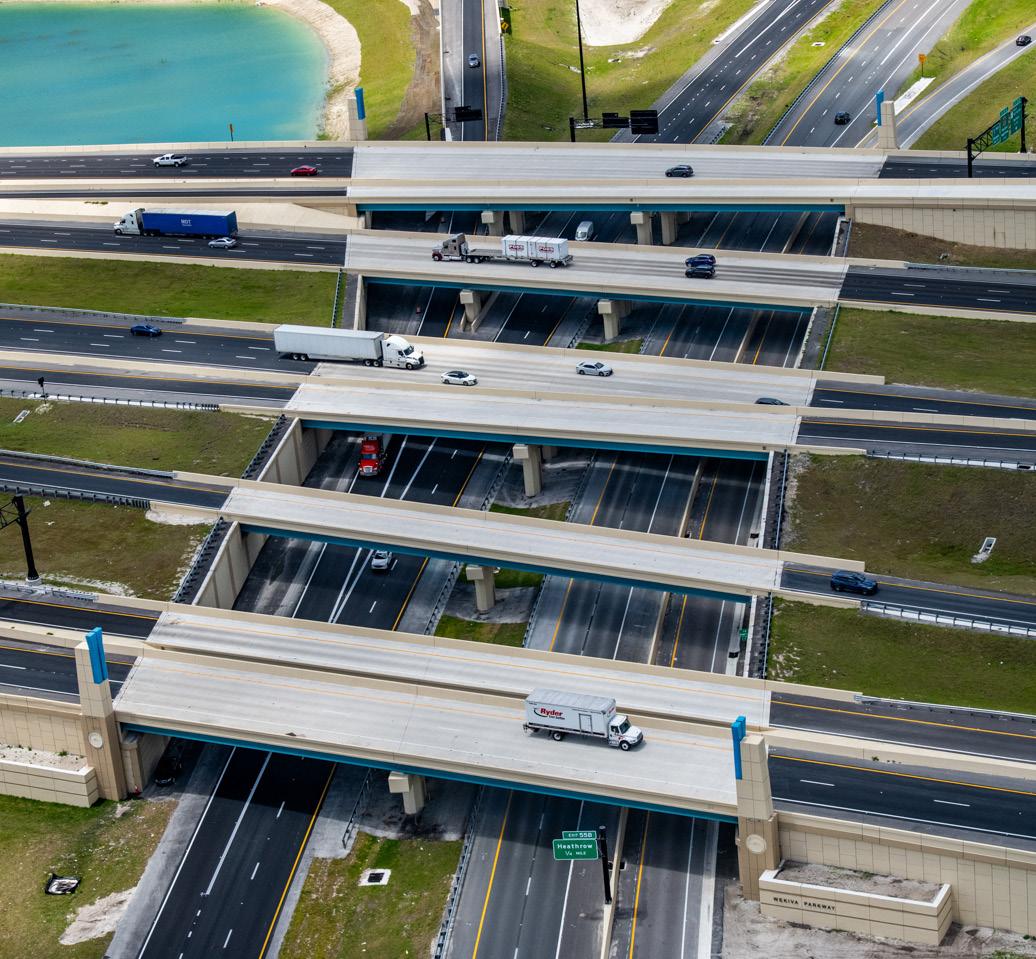

This new limited access toll road includes a system-to-system interchange that connects I-4, SR 417, and SR 429, while accommodating future express lanes, 20 new bridges, and two bridge widenings. Through our Team’s innovative design, we provided $25 million in cost savings to our client, improved the overall safety and operations, reduced the bridge deck area by 200,000 SF, preserved four existing bridges, and minimized long-term maintenance needs.

For the reconstruction of the existing interchange to a diverging diamond interchange, our Team shifted the entire I-4 typical section to the west. This improves the horizontal and vertical geometry of the mainline and ramps, constructs the bridges offline, reduces the bridge deck area by over 18,000 SF, and eliminates all Category 2 Bridges, post-tensioned piers, and shoring towers. This allows the I-4 westbound to Turkey Lake Road to open 24 months earlier than the original project schedule.

Senior Vice President of Alternative Delivery tlallathin@drmp.com
TJ serves as Senior Vice President of DRMP’s Alternative Delivery Market Sector. He has been actively involved in the execution of 16 Design-Build projects in Florida and has managed numerous complex bridges, limited access, and interchange projects. Serving as Design Project Manager, his Design-Build projects have saved his clients over $75 million in the past 15 years through innovative Alternative Technical Concepts. This includes saving $2 million on a $22 million project by using a 96-inch deep, 209-foot-long Florida-I Beams to span the most heavily-traveled intersection in Central Florida and saving $2 million on a $63 million interchange replacement project with post-tensioned concrete pier caps.


Leo Rodriguez, PE
Structures Project Manager lrodriguez@drmp.comLeo Rodriguez, PE, Structures Project Manager
Leo serves as a Structures Project Manager for DRMP’s Transportation Market Sector. He has experience with the replacement, widening, and rehabilitation of fixed and movable bridges, the design of new tolling facilities and building structures, and the design of miscellaneous structures, including sheet pile walls in coastal environments. He is responsible for planning, developing, quality control, and delivery of studies, designs, plans, specifications, and estimates for design-build, conventional, and complex transportation projects. Additionally, Leo provides inspections and construction support services.
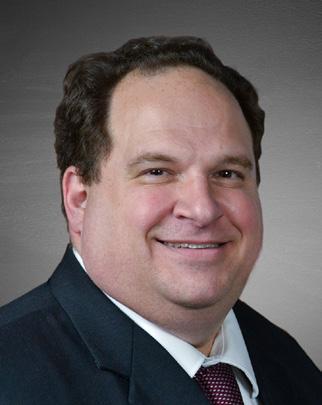
Anthony Smith
Alternative Delivery Design Specialist anthony.smith@drmp.com
Anthony serves as an Alternative Delivery Design Specialist for DRMP’s Alternative Delivery Market Sector. In this role, he is responsible for developing creative and innovative alternative technical concepts to streamline design-build projects, with the goal of improving safety and efficiency, minimizing project impacts, and reducing costs. He also assists in managing workload, project schedules, and preparing design calculations, reports, and plans for both roadway and temporary traffic control design. His extensive design-build experience includes eight projects for both FDOT and CFX, with six being major interchanges and capacity projects.


Braking News is published quarterly as an internal communication to the employees of the Trilon Transportation Platform Partner Firms. Each partner firm contributes editorial content for the newsletter centered upon sharing project updates, services, leadership messages and industry news.
The newsletter cover photo in each issue will be provided by the partner firms in alphabetical order giving each firm an opportunity to showcase a service or project.
Newsletter Staff
Managing Editor
Julia Lindstedt (DRMP)
Contributing Writers
Natalie Lozano and Mackenzie Field (Alta Planning + Design)
Gabrielle Davis and Alexi Wyatt (DRMP)
Shawn Miller (HMB)
Ariel Peterson (Horrocks)
Hollis Sullivan, Darell Fischer and Aaron DeLong (RDA)
Graphic Design/Layout
Edmundo Rubio (DRMP)